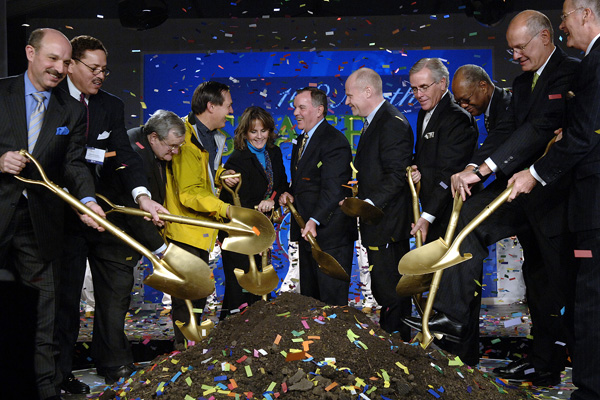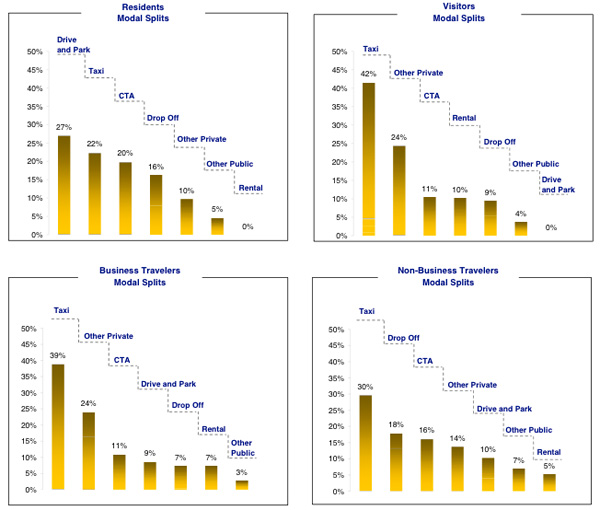
Photo: Chuck Berman/Chicago Tribune
Block 37 groundbreaking, 2005
Greg Hinz has a great exclusive today: the first-ever tour of Chicago's Block 37 "superstation," or more accurately "one of the world's biggest unfinished basements" meant to house express trains to O'Hare and/or Midway. You will have to forgive Hinz if the pictures are not all that compelling; it is a giant unfinished underground space. But the unspectacular photo gallery does provide some contrast to the spectacular sums used to build the lair, a large, expensive husk of an idea still waiting for the money to finish it. And to do something with it:
But like everything else at Block 37, the idea was cursed.
The money needed for express train service, likely in the billions, never was obtained. And any private-sector interest melted away when the economy entered its worst downtown in many decades in the late 2000s. So, the city stopped after completing the shell and built no more.
While the history of Block 37 would lead one to believe that it is cursed, it has also been victim to bad timing and worse ideas. And in 2005, the Reader's Ben Joravsky predicted exactly the outcome that occured. The city built a $250 million rail station with no guarantee of federal or private funding to actually build the service intended for the station, in the hopes that doing so would attract that money. The money wasn't obtained, but there was no concrete funding source in the first place, other than "if you build it, they will come." The result is somewhere between "unlucky" and "sort of what you'd expect."
CTA officials concede they have only enough money on hand to build the superstation. But they say the risk is worth taking because they hope to get federal money to complete the project sometime in the future. Yet they have no designs for the rest of the project, no cost estimates, no construction timetables.
So why did they move forward?
"They really didn't tell us too much about it," one alderman sheepishly explains. "Most of us voted for it because we figured let's just get something going there [at Block 37]."
As Hinz points out, and as I've discussed before, the idea of a pricey airport express train on top of existing proletarian mass transit is not insane or unprecedented. London has had success with its very expensive, privately financed Heathrow Airport express train. A 2006 study by the CTA noted that a taxi from O'Hare to downtown cost $35-$40 and took 30-70 minutes, "depending on traffic conditions." Which sounds about right; according to Google Maps, it's 26 minutes to do 17.9 miles to Millennium Park under good conditions, with an estimate of an hour right now. Taxi Fare Finder estimates a fare of $45.44, up to $50.22 in heavy traffic. So $10-$20 for a 30-minute train ride to O'Hare—comfy seats, WiFi—might have appeal.
But why not take the Blue Line, for less than a tenth of cab fare and comparable travel times? Beats me, but according to a 2004 study by Wilbur Smith Associates cited by the CTA, people don't. At least tourists and business travelers don't.

So that's the idea. But that's all it is. Completing it, the CTA estimated at the time, would cost either $771 million or $1.5 billion, depending on the path taken by the express trains, with expected profits of $3.8 million a year by 2030: "While net income is projected to be positive in 2030, losses in the early years of service lead a funding shortfall." So the city pulled out, leaving what are, for now, literally sunk costs.


